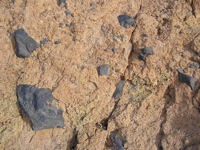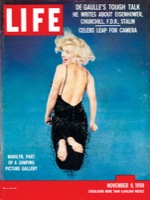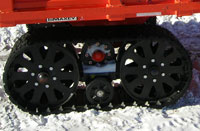Saturday evening, in the laboratory, before a pc. At about 8 p.m. I try to remember the last time I turned it off, but I don’t manage. Bad sign. After a while, Julian, my New Zealand teachmate, comes in with an uncoded, catatonic look. We look at each other, we laugh and (maybe) we do not even say. Silently we go out of the laboratory and we know: tomorrow we are going to Castle Rock.
The environs of Mc Murdo offer good chances to have some brief healthy trips. There is only one problem: here we are in Antarctica. It counts little if you live in the most equipped and comfortable base of the continent; as soon as you go out, it is the master. And, we have understood, it does not joke. During recreational activities, accidents, due to different causes, are not unusual. Some of them, unfortunately, did not have a happy end. In order to solve the problem, rigid rules were established.
One: whoever goes in for outdoor activitites has to follow a specific course (just 3 hours).
Two: before the departure, you have to state the exact data (way, start, arrival, participants etc.) in a dedicated area of intranet, the informative net of the base.
Three: right before leaving the base, you have to go the firemen’s barracks for the final permission, given according to the weather forecast, and for the emergency radio.
At about 11 o’clock, we succeed in finishing the scheduled liturgy and, dressed like divers, we walk towards Castle Rock: a rocky formation emerging in the middle of Ross Isle, at 5 km from the base. It is the longest route and during the return we reach Scott base: 16 km, 6 forecast hours. After half an hour walk and a brief stop in an emergency refuge (called “the apple”, for its shape and colour), we reach Castle Rock. We feel well and we decide to go along the road towards the top.
 And we do well. The top is flat and without snow, the rock is brick red, porous and friable, with big fragments of black rock, many of which vacuolar. I pronounce the name Franco told me: ‘ialoclatsiti’. Probably, the fruit of a remote lave flow in the ice. We look around and we find nothing like what we have seen before.
And we do well. The top is flat and without snow, the rock is brick red, porous and friable, with big fragments of black rock, many of which vacuolar. I pronounce the name Franco told me: ‘ialoclatsiti’. Probably, the fruit of a remote lave flow in the ice. We look around and we find nothing like what we have seen before.
Heavy and low clouds quickly follow the profile of the volcano Erebus, parts of others, taller and more laminar, draw shadows moving over the ice towards a horizon that joins white and azure in every possible way, according to the direction you look at: white/azure, white/sky-blue; white/white… We sit down. We stay and watch silently for half an hour, just like we did a few hours before in the laboratory. Then, lazyly, we take our cameras and take some shots. In the meanwhile, the wind is blowing, rather convincing in inviting us to descend and we do not take much persuading.
 Have you ever met with those black and white photos shot during Marilyn Monroe’s visit to American troops in Vietnam? If it happens to you, take two minutes to look over them: she is wearing a short chenille jumper, she has got short and curly hair, a porcelain skin and a changing smile… all the requisites to be a Venus at that time and not only… The soldiers are fanning out around her, quite close to the photographer too, so that you can look at their faces: heads stretching in every direction, pale-blue, with short and very tidy hair, wide open eyes, emaciated but smiling faces.
Have you ever met with those black and white photos shot during Marilyn Monroe’s visit to American troops in Vietnam? If it happens to you, take two minutes to look over them: she is wearing a short chenille jumper, she has got short and curly hair, a porcelain skin and a changing smile… all the requisites to be a Venus at that time and not only… The soldiers are fanning out around her, quite close to the photographer too, so that you can look at their faces: heads stretching in every direction, pale-blue, with short and very tidy hair, wide open eyes, emaciated but smiling faces. The antarctic equivalent of our buses, utes, undergrounds and motortrucks that we have use and fight daily. Have you ever guessed? Perhaps a new idea will raise from the environment and, why not, also from the men that built and now drive them.
The antarctic equivalent of our buses, utes, undergrounds and motortrucks that we have use and fight daily. Have you ever guessed? Perhaps a new idea will raise from the environment and, why not, also from the men that built and now drive them. And we do well. The top is flat and without snow, the rock is brick red, porous and friable, with big fragments of black rock, many of which vacuolar. I pronounce the name Franco told me: ‘ialoclatsiti’. Probably, the fruit of a remote lave flow in the ice. We look around and we find nothing like what we have seen before.
And we do well. The top is flat and without snow, the rock is brick red, porous and friable, with big fragments of black rock, many of which vacuolar. I pronounce the name Franco told me: ‘ialoclatsiti’. Probably, the fruit of a remote lave flow in the ice. We look around and we find nothing like what we have seen before.